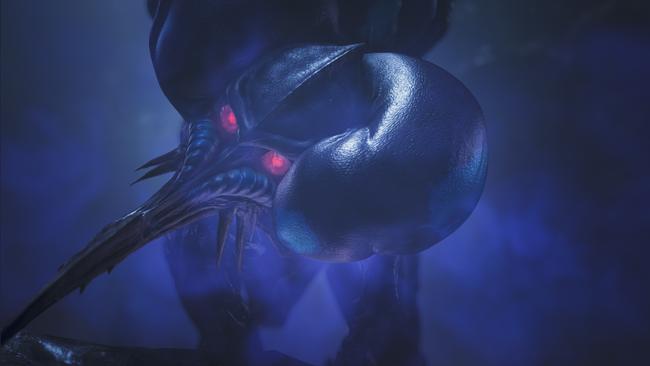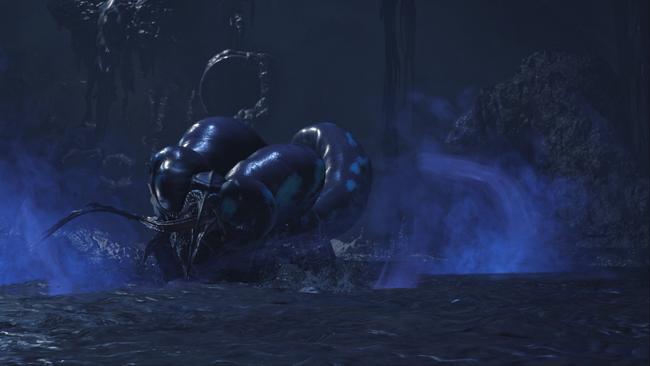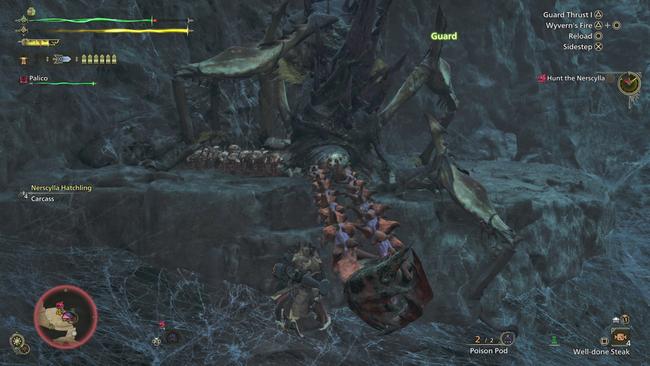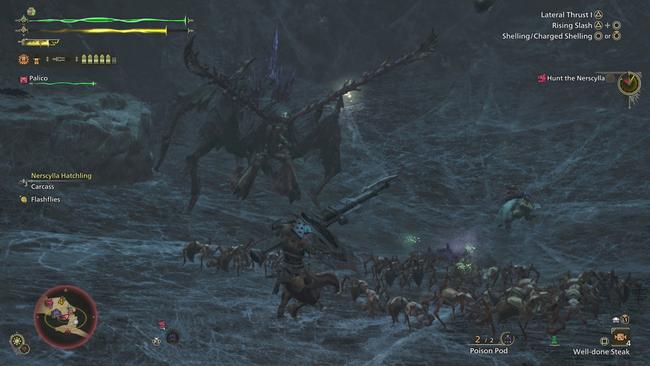
Playing a near-final version of Monster Hunter Wilds has quelled all of my fears
It’s so close you can almost taste it, Monster Hunter Wilds is set to dominate mine (and seemingly everyone else’s) March following its release on February 28. But, ahead of launch, it’s been a somewhat rocky road for Capcom.
We last saw the game a few months ago, where we delved into the systems and wider changes present in the title. Around then, Capcom ran an Open Beta test for Monster Hunter: Wilds, which didn’t go down well with fans and hunters alike. While the core gameplay loop was intact, the open beta test suffered from being based on an old build, meaning that Capcom has had to go out of its way and address several changes being made in the run-up to the final version.
Elements like performance were rocky on consoles and PC. Additionally, swinging any heavy weaponry felt like using a paper fan to break down a brick wall. It wasn’t the best showing, and it was there that my fears for Monster Hunter: Wilds began.
Seeing Monster Hunter: Wilds running on the same engine as Dragon’s Dogma 2, and running into the same performance problems set off alarm bells in my head: Is Monster Hunter: Wilds going to suffer from the same fate of having somewhat rough performance? Going into a two-hour-long session in a near-final build, I set to address some of the fears that I and many other ardent fans of bashing monsters in the head have. Is Capcom going to manage to stick the landing?
In the session, I wasn’t able to use any online functionality and played on a base PlayStation 5 with a prioritized graphics setting, which targets 30 FPS. Both hunts took place in the dank and musty Oilwell basin, which puts a spin on Monster Hunter’s traditional Volcanic areas by offering up a cavernous, interconnected system of oil pits, caves, and rough terrain.

In your portable campsite, you can do the usual: Gear up and eat food for buffs ahead of setting out. I picked two weapons to take along with me, the trusty Switch Axe, alongside a Hunting Horn, both of which I’ve used since Monster Hunter 3: Ultimate. My first target was the Rompopolo, which dwells in the depths of the Oilwell Basin.
In Monster Hunter: Wilds, getting into the action is fairly rapid: You just need to hop on your Seikret mount, which will automatically guide you to the monster you’re looking for. While this is nice and streamlined, I can’t help but feel that it also takes away some of the fun to be found in the older games of learning the area patterns and behaviors of each monster you take down. I might just genuinely be very old and hate convenience, though.
Approaching my target, the Rompopolo, found in a smaller area within the Oilwell basin, I was immediately struck by its design. Taking the skeleton of a Brute Wyvern, and making it slightly smaller than its evolutionary brethren, the Rompopolo looks uniquely different. Its frog-like black and blue skin, with bulbous poison sacs around its head and body, make it look like a creature of the deep that human eyes were never really meant to see. Its main methods of attack? Mastery of the environment, as well as a stinger, which can inflate and poison you. The Rompopolo can also perform a wide cone AoE in front of you, which is telegraphed by the Wyvern digging into the basin below using its head, with explosive results.

The best counter against the Rompopolo is to attack its squishy and vulnerable sacs, which house the deadly poison within. Using the game’s Focus Mode, you’re able to slash these down by focusing on wounding your enemy. With bigger, heavier weapons, it means that you can get your attacks in with pinpoint precision, which is very much welcome. The introduction of offset attacks is also a brand-new boon to your arsenal in Monster Hunter: Wilds, which can (as the name suggests) hit the creature off balance to deal heaps of damage.
With the monster wounded, and its tail firmly cut off using the trusty Switch Axe, I noted how much heavier and chunkier each weapon’s hit felt. This is down to the developers implementing hitstop, which was missing from the beta. Back are the hard and satisfying hits, and it felt like my weapon had its much-needed heft back. That’s not all, as other weapons have also had moveset changes, such as the Insect Glaive, which has its aerial arsenal back, vaulting, and all.
There are too many changes to list them all individually, but it’s clear that Capcom has listened to fan feedback from the Open Beta Test, which offers hope that the developer will be quick to iron out any major issues.
The Rompopolo might not be the most exciting new monster that Wilds has to offer, but it feels like the Khezu’s dirty basement-dwelling cousin, which makes it a perfect fit for the roster. With other returning monsters incoming, Wilds is also home to a beast that some may have faced in previous games, the deadly arachnid-like Nerscylla.

The Nerscylla’s moveset is largely similar to previous iterations: Two giant barbed hooks trap you, while web spits seek to hinder your movement as Nerscylla gradually hunts you down. With a poisonous twist that can slowly kill you over time, its silken webs and sleep-inflicting attacks can quickly spin doom if you’re not careful about watching your health bar.
While Nerscylla initially debuted in Monster Hunter 4, showing off its rapid moveset and multi-leveled arenas in tow, its promise has been delivered upon even further in Monster Hunter: Wilds. Now, once you enter the Nersylla’s lair, it is surrounded by dozens of tiny Nerscylla hatchlings, which distract you away from the monster, and add another layer of annoyance to the battle which ensnares you into the creature’s trap. It’s these small changes in addition to its stunning 4K presentation which make returning monsters feel fresh and exciting, despite having hunted them dozens of times in the past.
Nerscylla was more vulnerable to being smashed using blunt damage, so to outflank the monster, you can quickly hop onto your Seikret mount and switch weapons. This is very handy, as it also acts as an evasive maneuver that players will need to get used to as time goes on.
Squishing the Nerscylla with a blunt weapon like the Hunting Horn was a cinch, with the new focus mode adding another layer of targeted attacks. Once you get the hang of using focus mode, and focus strikes (a new attack type), you quickly get plenty of drops and materials for doing so.

While it was clearly a low-rank hunt, I couldn’t help but feel as though both monsters went down fairly quickly. This could be down to the tuning of the specific quests I was doing, or my choice of weaponry, but it all felt a little too easy, especially with thousands of hours of hunting under my belt. Since it’s a pre-release build meant for the press, I’m just going to assume that the difficulty will be slightly tuned in the final release.
Throughout the two hours or so that I had with Monster Hunter: Wilds, one thing I never noticed was rocky performance. Its graphics-prioritized mode was seemingly set at a rock-solid 30 FPS, however, that could be down to the Oilwell Basin being a less demanding scene than the Windward Plains as seen in other builds. The performance mode also no longer looks like a smeared, pixelated mess on a base PS5, though its framerate was harder to discern.
With elements like combat being so clearly refined to its hilt, and performance seemingly rock-solid on consoles, many of the biggest fears that I had going into this preview were dispelled. With new and returning monsters leaving a lasting impression, these few hours not only addressed all the issues that I had with its weaker open beta, but it made me believe that Capcom is once again delivering something special.
The developers are pulling out all of the stops to make sure that this release is rock solid, which is something I believed they weren’t going to pull off, before going hands-on with near-final code.
Monster Hunter is so back.
Special thanks to Rurikhan for kindly sharing images. Be sure to check out his excellent YouTube channel.